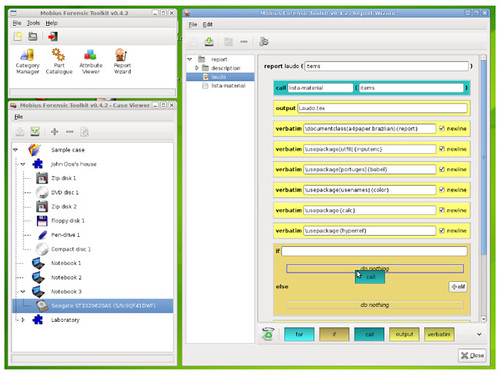theHarvester – Gather E-mail Accounts, Subdomains, Hosts, Employee Names – Information Gathering Tool
theHarvester is a tool to gather emails, subdomains, hosts, employee names, open ports and banners from different public sources like search engines, PGP key servers and SHODAN computer database.
This tools is intended to help Penetration testers in the early stages of the project It’s a really simple tool, but very effective.
The sources supported are:
- Google – emails,subdomains/hostnames
- Google profiles – Employee names
- Bing search – emails, subdomains/hostnames,virtual hosts
- Pgp servers – emails, subdomains/hostnames
- Linkedin – Employee names
- Exalead – emails,subdomain/hostnames
New Features
- Time delays between requests
- XML and HTML results export
- Search a domain in all sources
- Virtual host verifier
- Shodan computer database integration
- Active enumeration (DNS enumeration,DNS reverse lookups, DNS TLD expansion)
- Basic graph with stats
Examples
Searching emails accounts for the domain microsoft.com, it will work with the first 500 google results:
./theharvester.py -d microsoft.com -l 500 -b google
Searching emails accounts for the domain microsoft.com in a PGP server, here it’s not necessary to specify the limit.
./theharvester.py -d microsoft.com -b pgp
Searching for user names that works in the company microsoft, we use google as search engine, so we need to specify the limit of results we want to use:
./theharvester.py -d microsoft.com -l 200 -b linkedin
Searching in all sources at the same time, with a limit of 200 results:
./theHarvester.py -d microsoft.com -l 200 -b all
You can download theHarvester here:
theHarvester-2.1_BH2011_Arsenal.tar
----------------------------------------------------------------------------------------------------------------------------------
----------------------------------------------------------------------------------------------------------------------------------
Super Powered Malware Sandwiches Found In The Wild – Frankenmalware
Now this is quite a fascinating story, especially if you know anything about Malware and have interests in that area.
It seems the latest development is the accidental development of new super-malware strains created by viruses infecting executable files of worms. Worms are generally executable files and well, viruses infect executables – so you can imagine what happens.
Now the franken-worm has both the characteristics of the original worm and it also carries the virus – so when it spreads, the virus also spreads.
Viruses are accidentally infecting worms on victims’ computers, creating super-powered strains of hybrid software nasties.The monster malware spreads quicker than before, screws up systems worse than ever, and exposes private data in a way not even envisioned by the original virus writers.A study by antivirus outfit BitDefender found 40,000 such “Frankenmalware samples” in a study of 10 million infected files in early January, or 0.4 per cent of malware strains sampled. These cybercrime chimeras pose a greater risk to infected users than standard malware, the Romanian antivirus firm warns.“If you get one of these hybrids on your system, you could be facing financial troubles, computer problems, identity theft, and a wave of spam thrown in as a random bonus,” said Loredana Botezatu, the BitDefender analyst who carried out the study. “The advent of malware sandwiches throws a new twist into the world of malware. They spread more efficiently, and will become increasingly difficult to predict.”BitDefender doesn’t have historical data to go on. Even so it posits that frankenmalware is likely to grow at the same rate as regular computer viruses, or about 17 per cent year on year.
There’s really unlimited possibilities with this, and the great thing (to me anyway) is that it occurred by complete accident. I guess the next step up would be virus authors purposely hunting down worm files and infecting them with additional capabilities.
There’s always been cases of malware in the past that hunt down other malware and remove them from the host machine.
All of the malware hybrids analysed by BitDefender so far have been created accidentally. However, the risk posed by these combos could increase dramatically as crooks latch onto the idea of deliberately splicing malware strains together to see what sticks. This is on top of efforts by blackhat coders to add extra features to others’ viruses and unleash the updated builds onto the unsuspecting public.BitDefender carried out its study after finding a sample of the Rimecud worm that was infected by the Virtob file infector. Rimecud is designed to steal online passwords for e-banking or e-mail accounts, among other functions. Virtob creates a hacker-controlled backdoor on infected systems.“Imagine these two pieces of malware working together – willingly or not – on the same compromised system,” Botezatu explains. “That PC faces a twofold malware with twice as many command and control servers to query for instructions; moreover, there are two backdoors open, two attack techniques active and various spreading methods put in place. Where one fails, the other succeeds.”
I wonder what will happen in the future with this and if the bad guys will really jump on this already sailing ship and use it to their advantage.
If you are interested you can read more on BitDefender’s Malware city blog here:
Source: The Register
----------------------------------------------------------------------------------------------------------------------------------

Mobius Forensic Toolkit 0.5.10 – Forensics Framework To Manage Cases & Case Items
Mobius Forensic Toolkit is a forensic framework written in Python/GTK that manages cases and case items, providing an abstract interface for developing extensions. Cases and item categories are defined using XML files for easy integration with other tools.

Installation
As root, type:
python setup.py install
Usage
Run mobius_bin.py.
You can download Mobius 0.5.10 here:









0 comments:
Post a Comment